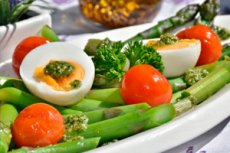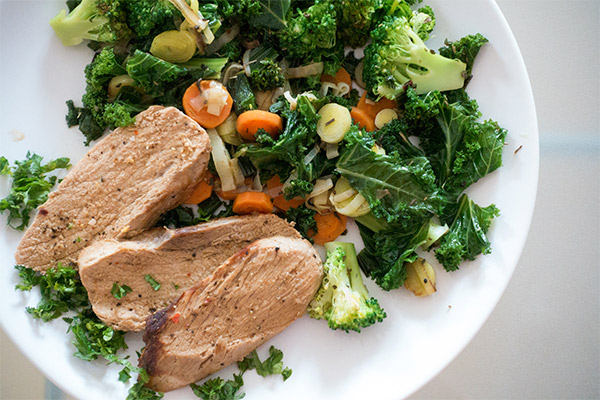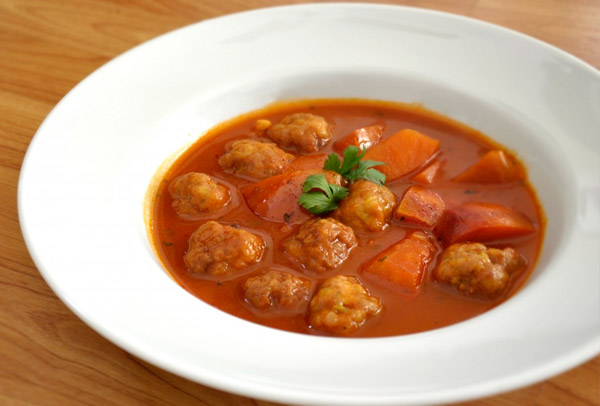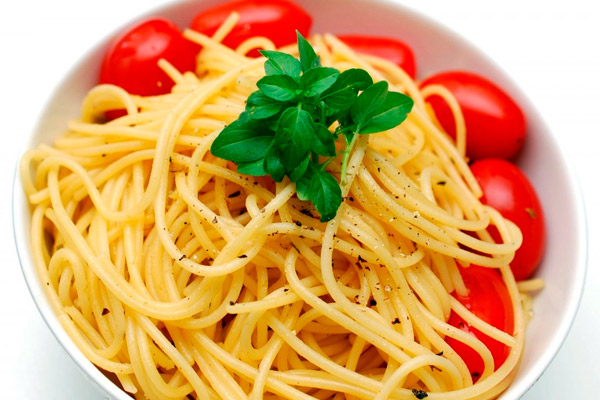Medical expert of the article
New publications
Diet #6 and 7 for kidneys in women and men
Last reviewed: 04.07.2025

All iLive content is medically reviewed or fact checked to ensure as much factual accuracy as possible.
We have strict sourcing guidelines and only link to reputable media sites, academic research institutions and, whenever possible, medically peer reviewed studies. Note that the numbers in parentheses ([1], [2], etc.) are clickable links to these studies.
If you feel that any of our content is inaccurate, out-of-date, or otherwise questionable, please select it and press Ctrl + Enter.

In case of kidney diseases, it is necessary to follow a diet, this is the only way to cure. Without following a diet, no treatment will be effective. A kidney diet significantly increases the effect of prescribed medications. It is created by a nutritionist for each patient individually. In this case, the results of the patient's tests are taken as a basis for development. It is necessary to take into account such important points as the presence of edema, increased or decreased pressure, etc.
Gentle diet for the kidneys
It is necessary to use a gentle diet, as it allows the kidneys to fully restore their structure and functions. In the presence of any pathologies without proper nutrition, no therapy will be effective. It allows you to utilize decay components, reduce intoxication, eliminate swelling and inflammation. It is also necessary to take into account that the diet is strictly individual and is developed by the attending physician. At the same time, you must strictly adhere to the diet, monitor what foods are consumed and how they are processed. Salt is prohibited: it must either be completely excluded or limited. It is necessary to limit protein foods, since they create conditions for kidney overload.
Indications
It is prescribed for acute and chronic kidney diseases, for the prevention of exacerbations and recovery after a relapse, and even surgical intervention.
General information kidney diets
The fundamental components include the use of certain products that restore their structure and functions, prevent the development of the pathological process. Heavy products are excluded, which allows you to unload the kidneys. We proceed from the point of view that a certain load is created by salt and a large number of protein components. Accordingly, the diet implies a complete / partial refusal to eat foods that contain salt, rich in protein. The basis of the diet should be carbohydrates, which are easily absorbed, easily processed. All heavy products that can have a damaging effect and become a trigger factor for the development of an infectious and inflammatory process are also excluded. Carbohydrate-containing products should be the basic element of the diet: cereals, porridge. It is also important to use a gentle method of processing culinary products: boiling, steaming. In any kidney disease, it is necessary to minimize the use of seasonings, spices. Marinades and pickles, sauces, vinegars are completely excluded. It is also important to combine products correctly. For this purpose, there is a specially developed table, which indicates the compatibility of products. You should always remember that salt consumption should be kept to a minimum. It is imperative to control the quality of cooked food: products should only be fresh and high-quality. You should not eat spoiled dishes that have been stored in the refrigerator for a long time. You need to eat 5-6 times a day - this will saturate the body with all the necessary elements, allow the kidneys to develop their own work and rest regime. By the time you plan to eat, the kidneys will be in maximum functional activity and will be ready to process and remove substances. The rest of the time they will recover, the load on them will be minimal. This is what will allow the kidneys to recover in the shortest possible time.
This rule is especially relevant if the pathology affects both kidneys, if the person has undergone surgery, a transplant, or if only one kidney is present.
Efficiency consists in the correct use of liquid. Thus, the daily norm varies from 1 to 1.5 liters. Excess and deficiency are dangerous. It is necessary to take into account that the specified volume also includes the liquid that a person consumes with first courses.
Sometimes it is recommended to add citric acid to food, which replaces salt. In addition, it is able to relieve inflammation of the kidneys. It is worth trying to add it to meat, which will soften and significantly increase the digestibility of protein. Since meat is rich in protein, without which recovery is impossible, it is recommended to eat boiled meat. It is also important to include chicken.

Diet 7 for kidneys
The main purpose of table No. 7 is the therapy and restoration of kidney damage. It is recommended for nephrotic damage and kidney failure. It helps restore the balance of water and salts, relieve swelling. Indications for use are mainly acute and chronic forms of nephritis, pyelonephritis, a tendency to constant swelling.
It is used to treat disorders in which the kidneys do not function normally. The result is a violation of homeostasis, and the entire balance, the normal functioning of all systems, and even a change in blood counts. The diet is simple, but has its own specific nuances. Thus, products should be cooked exclusively in a steam or boiled method of processing. After recovery, you can gradually move on to stewing, baking, light frying. Frying, especially frying until a golden crust is formed, is prohibited. You will have to do at least an approximate calculation of calorie content in order to avoid excessive overload. Food should always be made from the freshest products and should be served warm. Hot and cold food do not promote digestion, and therefore create an additional load. It is better not to add edible salt.
It is also advisable to reduce the protein components in the food consumed. With this diet, it is completely forbidden to eat mushrooms and cook dishes from beans and fatty foods. Frying is used, not in the early stages, but when a person is recovering, at the stage of prevention. At the same time, frying is characterized by specific features. It is necessary to fry not fresh products, but pre-boiled ones. Frying should be light, without the formation of a strong ruddy crust. It is better to use vegetable oil, animal fats are not recommended.
Canned food, caviar, salted and smoked foods are excluded. Cheese and chocolate should also be avoided. Cheese contains preservatives and salt, which cause increased secretion of gastric juice. Fermented foods, various snacks, fast foods, sandwiches will only harm the kidneys. Mineral waters are also not recommended, as they are full of tonic substances, mineral salts.
Yeast dough is allowed, but it should not contain salt. Cream soups with herbs have a positive effect. Parsley and cilantro have proven themselves especially well. Dill and celery can be used for dressing. Sour cream is suitable instead of sauces and ketchups.

You can use fish and meat with low fat content. Gradually, such a method as sautéing is used. It is advisable to use offal, in particular liver. Dairy products are not completely excluded. Fresh milk cannot be taken by adults over 20 years of age, since their body lacks lactate dehydrogenase, which ensures the digestion of milk. The product is not absorbed, but only pollutes the body. Milk porridges and dishes with semolina have a good effect on the body. It is recommended to take a variety of porridges, alternating them with each other. It is also allowed to use eggs. It is better to cook eggs in the form of an omelet. You can boil them soft-boiled. Potatoes, unlike many other therapeutic diets, are not excluded. On the contrary, the effect on the body is only positive, since they contain a lot of carbohydrates, are processed quickly enough and are easily excreted. Kissels, juices, honey, jam, jelly, candy, ice cream are also used.
 [ 1 ], [ 2 ], [ 3 ], [ 4 ], [ 5 ], [ 6 ], [ 7 ]
[ 1 ], [ 2 ], [ 3 ], [ 4 ], [ 5 ], [ 6 ], [ 7 ]
Diet 6 for kidneys
Unlike table No. 7, the sixth diet is used for non-specific renal pathologies, in which an inflammatory, possibly infectious process occurs. It is not used for severe lesions and their function. It is also recommended for patients with chronic diseases, at the stage of recovery, prevention. It is not used for acute inflammatory processes (it is more appropriate to use diet No. 7).
 [ 8 ], [ 9 ], [ 10 ], [ 11 ], [ 12 ]
[ 8 ], [ 9 ], [ 10 ], [ 11 ], [ 12 ]
Diet for kidneys with sand in the kidneys in women and men
It is necessary to follow a gentle diet, which implies the use of boiled and steamed dishes, low-fat products. All fatty, spicy, smoked foods are excluded. More vegetables and products rich in carbohydrates should be added, in particular, porridge, cereals, potatoes.
Diet for kidney stones
If stones are detected, the type of stones must first be determined. For this purpose, special laboratory and instrumental diagnostics are carried out. Only after the type of stones has been accurately determined can the appropriate treatment be selected.
With oxalates, it is necessary to limit the intake of oxalic acid into the body. This implies the need to exclude greens from the menu. Also reduce the intake of vitamin C (ascorbic acid). Lemons, apples, grapes, citrus fruits are prohibited. It is important that the body receives vitamin B, since it breaks down oxalic acid.
If urates, which are salts of uric acid, are detected, this indicates an acidic environment, i.e. the pH values are very low. It is important to introduce alkalizing foods: cereals, potatoes, dried fruits and honey. They are the basis of the diet. Anything that contributes to acidification of the environment is excluded.
When phosphates are detected, the main action is aimed at acidifying the environment. Dairy dishes and compotes are excluded.
Other types of stones are extremely rare, so there is no special diet for their treatment. The doctor selects the optimal diet based on the patient's well-being and test results. The main focus is on acidity indicators.
 [ 15 ], [ 16 ], [ 17 ], [ 18 ], [ 19 ], [ 20 ], [ 21 ]
[ 15 ], [ 16 ], [ 17 ], [ 18 ], [ 19 ], [ 20 ], [ 21 ]
Diet for kidneys with pyelonephritis
If a person suffers from pyelonephritis, it is necessary to exclude products containing oxalic acid from the diet. Baked goods are also excluded. Potato products, pasta, and cereals can be included in the diet. Vegetables and fruits, rye bread are essential. It is also recommended to include honey, cereals, jelly, and juices in the diet. It is recommended to prepare vegetarian soups. You cannot eat fatty foods, spices, marinades, pickles, alcoholic beverages, and kvass.

 [ 22 ], [ 23 ], [ 24 ], [ 25 ]
[ 22 ], [ 23 ], [ 24 ], [ 25 ]
Diet for people with one kidney
The main principle is to achieve minimal loads on the kidneys. This can be achieved by limiting protein intake. It is also necessary to consider what kind of protein will be consumed. You can consume egg whites. It is recommended to exclude corn, legumes, mushrooms, since the protein contained is difficult to digest and puts excessive strain on the body. It takes a long time to process and is considered heavy for the body.
Also, such people must exclude salt or reduce its consumption to a minimum. Spicy, fatty foods, spices, and other non-dietary components are excluded.
Protein diet for kidneys
The protein diet is ideal for those people who have only minor problems with kidney function. It has a predominantly supportive effect. The essence is to consume protein in the usual quantities. Only in this case it is advisable to organize fasting days for yourself, which will give you the opportunity to cleanse and recover. Fasting days mean a day when you can consume only 1 product throughout the day. It is better to have carbohydrate days, which will normalize kidney function and at the same time allow you to maintain a relatively high level of energy in the body.

Many specialists prescribe oatmeal days to their patients, and from fruit days - watermelon and apple. Many functions are also normalized, for example, blood pressure decreases, sorption processes increase.
Salt diet for kidneys
Some diseases and pathological processes in kidney tissues do not require the mandatory exclusion of salt from the diet. It is only important to stick to fractional nutrition and take light, gentle products as a basis. Preference is given to carbohydrates, while protein should be excluded if possible.
Salt-free diet for kidneys
In case of serious kidney pathologies, a strict diet without salt is followed. Any products containing salt, and even mineral water, are excluded. Bread can be dietary, without salt. It is even better to bake it at home.
Usually people cannot eat salt-free products. This feeling will last for 3-4 days, then the taste buds adapt and begin to perceive the real taste of the products. Potatoes and buckwheat porridge, eaten without salt, reveal their taste qualities especially well.
Salt is partially replaced by other products, such as coriander, a small amount of pepper mixture. Instead of salt, you can use chopped seaweed. When buying products for the diet, you need to carefully read the composition. It is important to remember that often bread and pastries, almost all cheeses, are quite salty.
 [ 28 ], [ 29 ], [ 30 ], [ 31 ]
[ 28 ], [ 29 ], [ 30 ], [ 31 ]
Protein-free diet for kidneys
Allows to significantly increase the effectiveness of the prescribed course of therapy. It is characterized by low caloric content, therefore it is often used as a diet for weight loss. It is not compatible with heavy physical labor, as it can cause protein deficiency, muscular dystrophy. It is well suited for bedridden patients.
Diet for weight loss in kidney disease
A protein-free diet is used, allowing to restore kidneys and reduce the load. Due to the low calorie content, weight is significantly reduced.
It means that products containing protein are completely excluded from the diet. The main cooking technology is boiling. Frying and baking are prohibited. You can cook salads, bread. It is not recommended to take soy components, seafood, cheese snacks. Margarine, fats, oils, mixtures are also excluded.
Kidney Diet Recipes
- Stewed potatoes
- Baked potatoes
- Stewed cabbage
- Pancakes
- Croquettes
- Cabbage rolls
- Beetroot stewed in sour cream
- Carrots stewed with rice
- Fried rutabaga
- Pie with lard and meat
- Millet porridge
- Wheat porridge
- Rice pudding
- Greek women
- Manna
- Lapshevik
- Chicken cutlet
- Boiled chicken breast
- Steamed chicken cutlet
- Meatballs
- Peppers stuffed with meat
- Baked chicken
- Chicken thighs in sour cream sauce
As you can see from the list of recipes, the kidney diet can be very diverse. Contrary to popular belief, it is not necessary to torture yourself with tasteless and monotonous dishes.
Benefits
The diet promotes rapid recovery after an illness, prevents exacerbations. During an illness, it reduces side effects from the effects of drugs, increases their permeability to kidney cells, and, accordingly, the effectiveness of drugs increases. Provides protection of cells and increases their performance and functionality.

